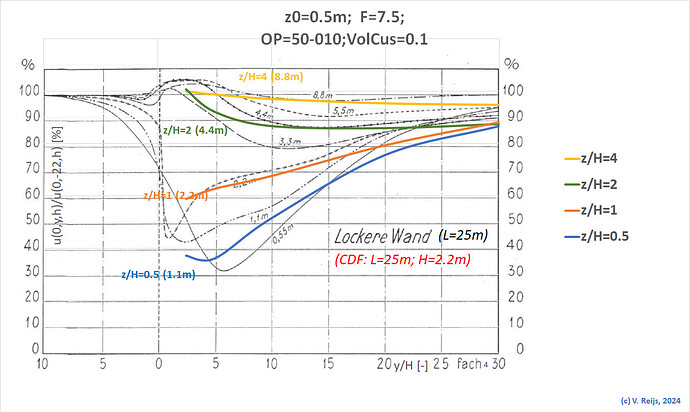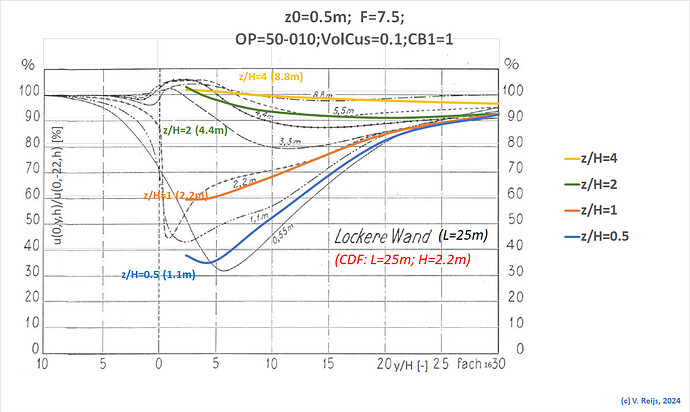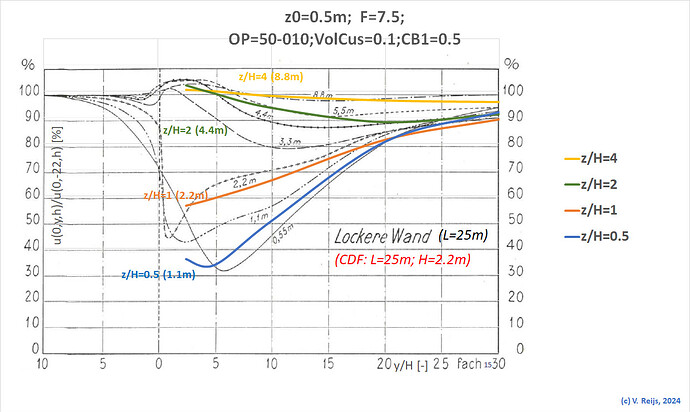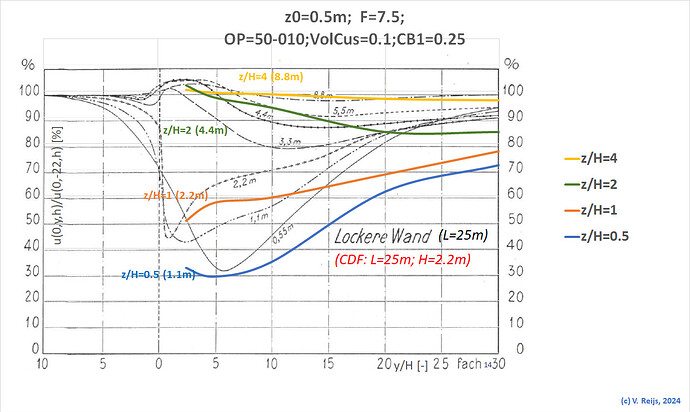I am trying to simulated an in-situ experiment reported in an article by Nageli
(Nägeli, Werner, Untersuchungen über die Windverhältnisse im Bereich von Schilfrohrwänden, Mitt. Schweiz. Anst. Forstl. Versuchw., 29, 213–266,1953).
He had a 25m long fence of 2.2m (H) height and measured at 22m (-10H) infront (reference speed) and behind the fence at heights of 1.1 (0.5H), 2.2 (H), 4.4 (2H) and 8.8m (4H) and distances ranging from -22 (-10H), 11 (5H), 22 (10H), 44 (20H) and 66m (30H).
All these are also as Cutting planes in below simulations. All measurements are perpendicular and at middle of the fence (x=0m).
So I used for the fence a rectangular block with Perforated plate with free area ratio of 0.5 (at least 4 cells) (2.2250.4m).
I also created an extra Cartesian Block (CB1) to increase the mesh sizing size manully,;CB1 is between -11m (-5H) and 22m (10H).
My project is here:
And here are the SIMULATION and Simulation Run with results (but the side views in below links also show this behavoir of course):
SIMULATION:
25m, 2.2m:5m/sec,F=7.5
Simulation Run:
<x=0, side view, looking perpendicular and at middle of the fence>
<CB1 is from y=-11 (y/H=-5) to y=22 (y/H=10), so larger y migth not be correct>
z0=0.5-op=0.5-VolCus=0.1-Dir=010 <default cell size: around 2.5m> (4)
z0=0.5-op=0.5-VolCus=0.1-Dir=010-CB1=1 <cell size: 1m> (16)
z0=0.5-op=0.5-VolCus=0.1-Dir=010-CB1=0.5 <cell size: 0.5m> (15)
z0=0.5-op=0.5-VolCus=0.1-Dir=010-CB1=0.25 <cell size: 0.25m> (14)
z0=0.5-op=0.5-VolCus=0.1-Dir=010-CB1=0.125 <cell size: 0.125m> (17)
The B&W curves give the data from the Nageli article and the simulation (colored and labeled) are for each height the speed ratio (relative to speed at -10H) perpendicular and at middle of fence.
Interesting that the ones with the least resolution (aka no CB1 [mesh sizing around 2.5m] or CB1 and perhaps also 0.5m) map quite well the B&W results of Nageli.
The more meshing cells (resolution 0.25 and 0.125m) are included, the least matching between the simulation and the in-situ experiments.
Is the simulation further away than 10H [size of CB1] so bad because of the change from CB1 mesh size (0.25 or 0.125m) to flow region mesh size (2.5m)?
<I tried to enlarging the CB1, but then I got memory shortage>
I always thought that the more meshing cells the better it is, but is there some optimum? Aka how best to determine the number of meshing cells per meter?
Or do I do my meshing wrong? Any advice is thus very welcome.
Thanks for your help/feedback/advice/patience.




